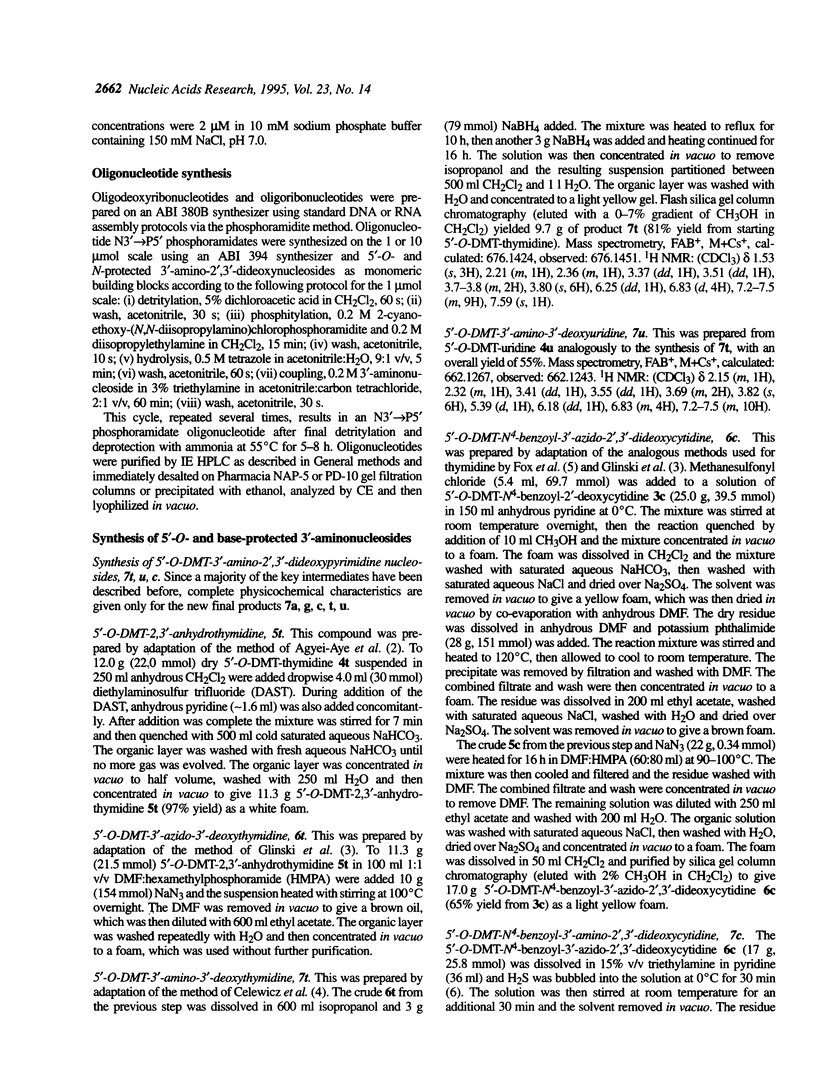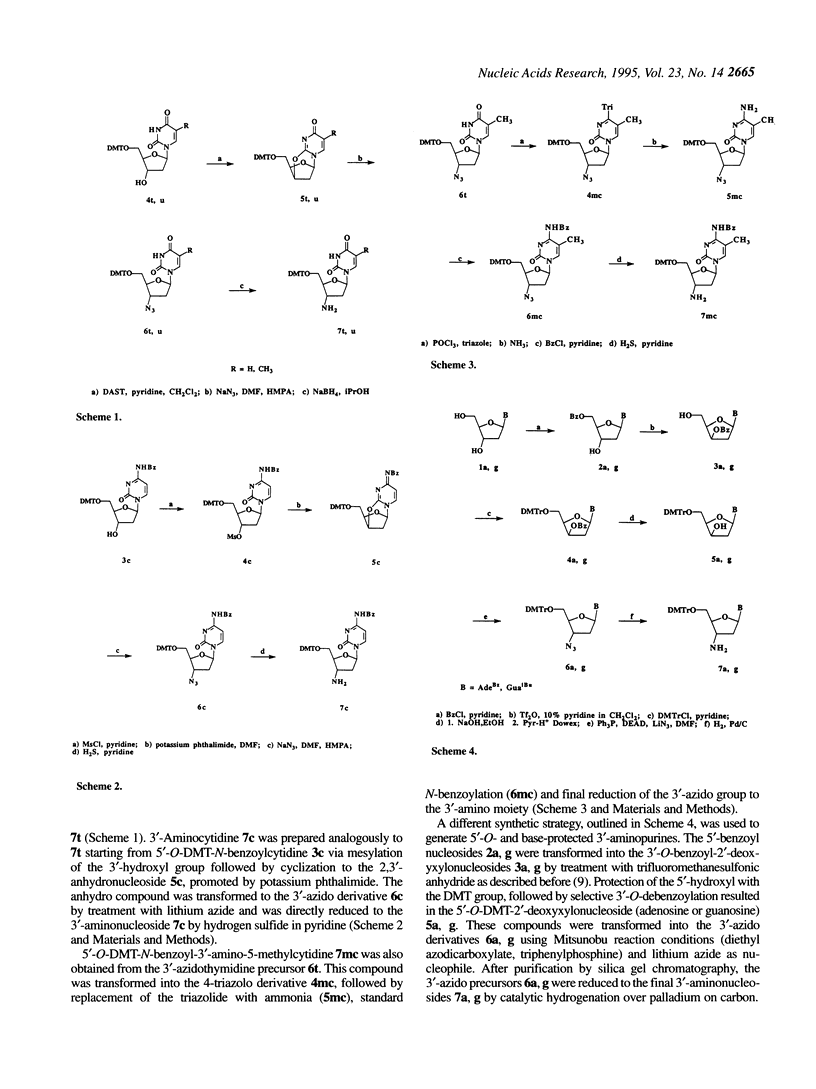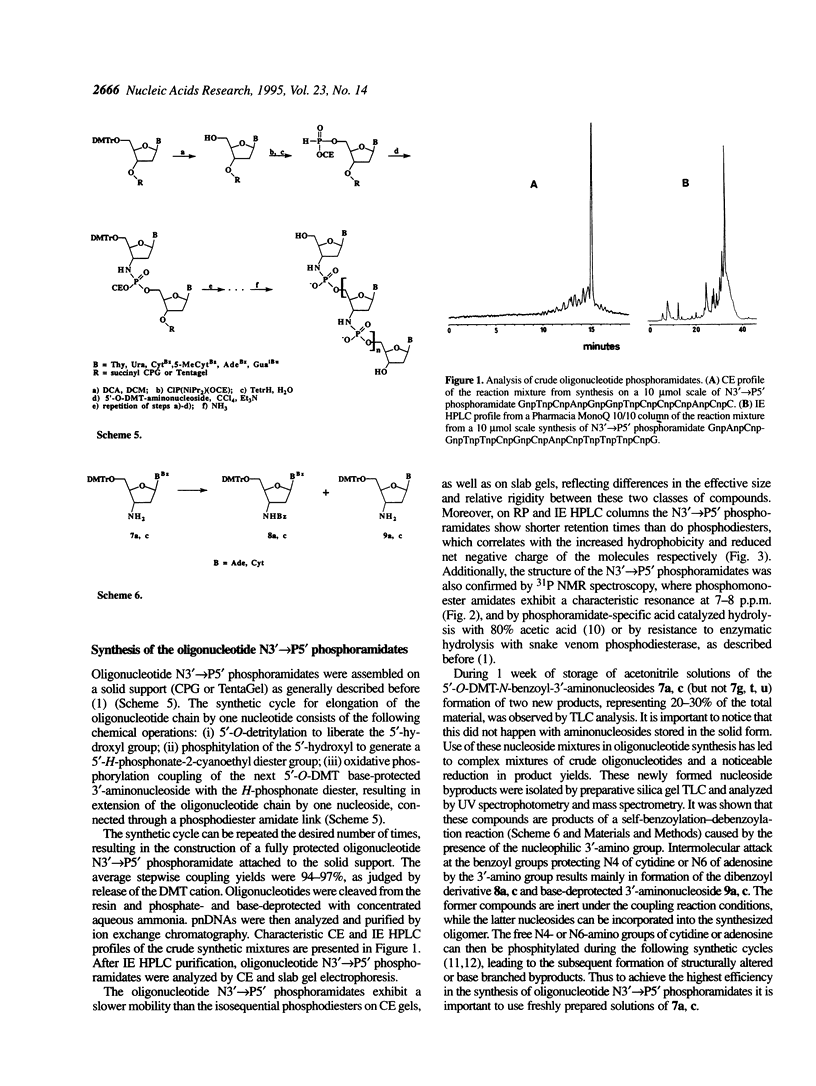Abstract
An efficient synthesis of the novel nucleic acid analogs oligodeoxyribonucleotide N3'-->P5' phosphoramidates, where the 3'-oxygen is substituted by a 3'-nitrogen, is described. Synthesis of the title compounds was accomplished by the following synthetic steps. First, 5'-O-DMT base-protected-3'-amino-2',3'-dideoxynucleosides were prepared. The 3'-aminopyrimidines were obtained via the corresponding 2,3'-anhydronucleosides, whereas 3'-aminopurines were derived via 2'-deoxyxylo precursors. Second, using the prepared 3'-aminonucleosides, oligonucleotide N3'-->P5' phosphoramidates were synthesized on a solid support. Oligonucleotide chain assembly was based upon a carbon tetrachloride-driven oxidative coupling of the appropriately protected 3'-aminonucleosides with the 5'-H-phosphonate diester group, resulting in the formation of an internucleoside phosphoramidate link. Fully deprotected oligonucleotide N3'-->P5' phosphoramidates were characterized by ion exchange and reversed phase HPLC, capillary and slab gel electrophoresis and by 31P NMR analysis. Oligonucleotide N3'-->P5' phosphoramidates form remarkably stable duplexes with complementary RNA strands and also with themselves, where the melting temperature of the complexes exceeded that for the parent phosphodiester compounds by 26-33 degrees C. Additionally, duplexes formed by oligonucleotide phosphoramidates with single-stranded DNA were also more thermally stable than those formed by phosphodiesters. The described properties indicate that these compounds may have great potential in oligonucleotide-based diagnostics and therapeutic applications.
Full text
PDF







Selected References
These references are in PubMed. This may not be the complete list of references from this article.
- Gryaznov S. M., Letsinger R. L. Selective O-phosphitilation with nucleoside phosphoramidite reagents. Nucleic Acids Res. 1992 Apr 25;20(8):1879–1882. doi: 10.1093/nar/20.8.1879. [DOI] [PMC free article] [PubMed] [Google Scholar]
- Gryaznov S. M., Letsinger R. L. Synthesis and properties of oligonucleotides containing aminodeoxythymidine units. Nucleic Acids Res. 1992 Jul 11;20(13):3403–3409. doi: 10.1093/nar/20.13.3403. [DOI] [PMC free article] [PubMed] [Google Scholar]
- Martin F. H., Tinoco I., Jr DNA-RNA hybrid duplexes containing oligo(dA:rU) sequences are exceptionally unstable and may facilitate termination of transcription. Nucleic Acids Res. 1980 May 24;8(10):2295–2299. doi: 10.1093/nar/8.10.2295. [DOI] [PMC free article] [PubMed] [Google Scholar]
- Xodo L. E., Manzini G., Quadrifoglio F., van der Marel G., van Boom J. DNA hairpin loops in solution. Correlation between primary structure, thermostability and reactivity with single-strand-specific nuclease from mung bean. Nucleic Acids Res. 1991 Apr 11;19(7):1505–1511. doi: 10.1093/nar/19.7.1505. [DOI] [PMC free article] [PubMed] [Google Scholar]


